Home » Posts tagged 'CUNY' (Page 2)
Tag Archives: CUNY
Victoria Bond’s ‘Zora and Me’ Trilogy Closes With ‘The Summoner’
Victoria Bond is a lecturer in John Jay College of Criminal Justice’s English Department, and the co-author with T. R. Simon of a series of young adult novels inspired by the childhood of American literary icon Zora Neale Hurston. The Zora and Me trilogy fictionalizes a young Zora as what The New York Times calls a “girl detective,” living in Hurston’s real-life hometown of Eatonville, Florida. Through the use of tropes from mystery and horror, the books explore community, and the fragility of justice for Black people.
In the first novel, Zora and Me, stories about a shape-shifter lead Zora and her best friend Carrie (the narrator) to solve a murder mystery. The second novel of the series, The Cursed Ground, sees Carrie and Zora learning more about the dark, unforgiveable history of slavery from a ghost. And in Bond’s latest and final novel, Zora and Me: The Summoner, Eatonville experiences upheaval that causes Zora’s family to seek their fortunes elsewhere. The use of zombies in this book, Bond says, is a way to explore the exploitation and trauma of African American lives.
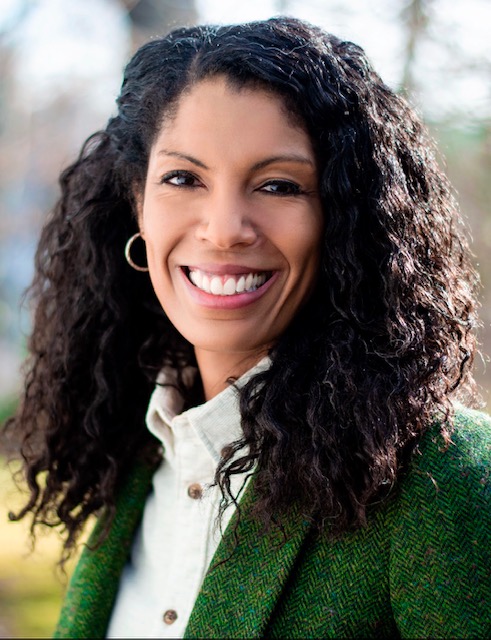
Each installment of the trilogy may incorporate dark, scary elements, but, according to Kirkus Reviews, the brilliance of the novels is that they are able to render African American children’s lives during the Jim Crow era as “a time of wonder and imagination, while also attending to their harsh realities.”
Zora Neale Hurston was born in Alabama in 1891 and published several novels and many short stories, plays and essays, although she is best known for her classic Harlem Renaissance novel, Their Eyes Were Watching God. Zora and Me was the first novel not written by Hurston herself that has been endorsed by the Zora Neale Hurston Trust, founded in 2002. To bring the real Zora’s experiences in her hometown of Eatonville, Florida, to life, Bond and Simon researched Hurston’s life extensively by reading her biographies and her 1942 autobiography, Dust Tracks on a Road. They sought to create a story right for young adult readers that was true to the historical period in which it takes place, and which features a smart, spirited Black girl with a vivid imagination, ready to inspire other girls.
Zora and Me: The Summoner is forthcoming from Candlewick Press on October 13, 2020, and available for preorder now. To learn more about Zora Neale Hurston from author Vicky Bond, watch her in this short video on YouTube. Or to learn more about the experience of writing a novel during these uniquely difficult times, read this post from the author.
A Critical History of Incarceration in New York City
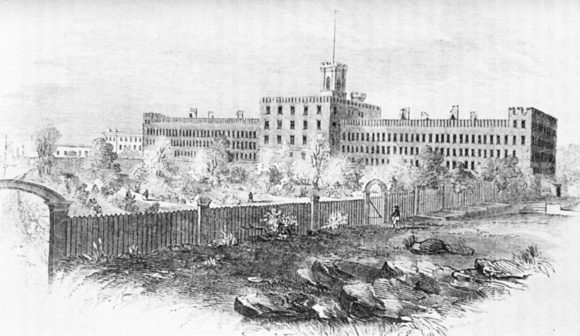
Dr. Jayne Mooney is an Associate Professor of Sociology at John Jay and a member of the doctoral faculty of Women’s Studies and Sociology at the CUNY Graduate Center. She is also a director and founding member of the Critical Social History Project (CSHP), a research initiative and part of John Jay’s Social Change and Transgressive Studies Project that draws on archival material to shed light on the history of incarceration in New York City.
The project began in 2015 with a conversation spurred by reporting on abuse, poor conditions, and a rash of tragedies at Rikers Island; how best, Mooney and colleagues wondered, to preserve the memories of those who had been affected by the infamous jail, including not only the incarcerated but also their friends and families, guards and educators? And so they began the “Other City” project, which forms the largest component of the CSHP. Informed by their research into the history of New York’s penitentiary system, Mooney’s working group is pointing out the problems inherent in Mayor Bill de Blasio’s administration’s proposal to close Rikers and open four new city jails.
“On the most basic level, what we’re showing is that the current proposals are reinventing the wheel. It’s the same thing that’s always happened. Closing an institution and setting it up again, you’re going to have the same problems, because you’re not getting to those deep-rooted, structural issues,” says Mooney.
Reinventing the Wheel

In a forthcoming article, “Rikers Island: The Failure of a ‘Model’ Penitentiary” due to be published in The Prison Journal in 2020, Mooney and her co-author, CUNY graduate student Jarrod Shanahan, go through the instructive failures of incarceration reform in New York City back to the 1735 construction of the Publick Workhouse and House of Correction. They argue that a lack of historical documentation has allowed policymakers to strategically “forget” the failures of past “model” or “state of the art” institutions, continually replacing old jails with new without a look at the larger issues that have led to waves of highly praised but ultimately unsuccessful penal reform.
Set against the backdrop of historical, social and political context, Rikers’ closure and the proposals to replace it look familiar. “All of these places opened in the spirit of optimism—everything was going to change. And then everything goes wrong, these institutions are denounced as embarrassments, and the decision is made to close them down and rebuild. Of course, that’s what’s been happening in the present moment,” Mooney says. She and her colleagues encourage the Mayor’s Office to look beyond the walls of the prison for new solutions to social problems faced by New York and, indeed, the United States.
(Read her December 2019 letter to The Guardian on the subject, “Rikers has failed like others before it, but the solution is not new jails.”)
Preserving Voices, Preserving Justice
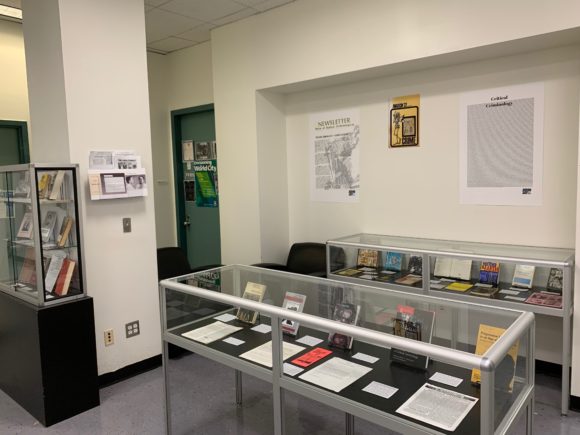
Mooney’s challenge to the new proposals is grounded not only in her work in political social history, but also in her background as a critical criminologist. “There’s a very strong abolitionist line all the way through critical criminology,” she notes, which informs the way the Critical Social History Project has approached critiques of the plan to build new jails.
The CSHP isn’t only focused on documenting mass incarceration in NYC. As the Vice Chair of the American Society of Criminology’s Critical Criminology and Social Justice Division, as well as the archivist, Mooney has been accumulating archival information related to the division and the field’s history of activism. The CSHP’s Preserving Justice component, jointly directed by Mooney and Visiting Scholar Albert de la Tierra, has created an exhibition in the Sociology Department displaying some of the core critical criminology texts. It’s open to any students, faculty or staff who are interested in the history of the field and the work of its important thinkers.
Expanding Research Horizons
Mooney is proud to talk about her team of dedicated researchers, which includes both undergraduate and graduate students. With the help of their diverse experiences and interests, the Critical Social History Project is expanding its remit, from the history of Rikers Island to topics including the history of women’s incarceration, other New York carceral institutions including the Tombs and Sing-Sing, mental illness and incarceration, and more. Together, they are showing the persistence of the problems related to the history of mass incarceration, no matter where in history you begin your research—up to and including the present day.
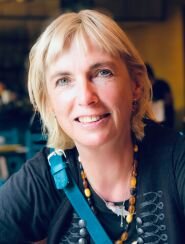 The Critical Social History Project is directed by Jayne Mooney and Albert de la Tierra. Other members are Sara Salman (Victoria University of Wellington), Nick Rodrigo, Jacqui Young, Susan Opotow and Louis Kontos, as well as John Jay students Camilla Broderick, Anna Giannicchi, Tayabi Bibi, Andressa Almeida, Marcela Jorge-Ventura, and Audrey Victor.
The Critical Social History Project is directed by Jayne Mooney and Albert de la Tierra. Other members are Sara Salman (Victoria University of Wellington), Nick Rodrigo, Jacqui Young, Susan Opotow and Louis Kontos, as well as John Jay students Camilla Broderick, Anna Giannicchi, Tayabi Bibi, Andressa Almeida, Marcela Jorge-Ventura, and Audrey Victor.
You can learn more by visiting the Critical and Social History Project’s website.
Using Crime Science to Fight for Wildlife
There is no question that the fashion industry causes great harm to the environment. The industry’s faddish nature, combined with the overproduction of low-cost, low-quality pieces, is designed to encourage overconsumption. Production of fast fashion garments eats up precious resources, like clean water and old-growth forests, and discarded clothing can sit in landfills for hundreds of years, thanks to synthetic materials used in construction.
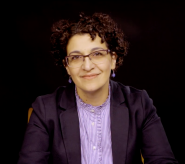
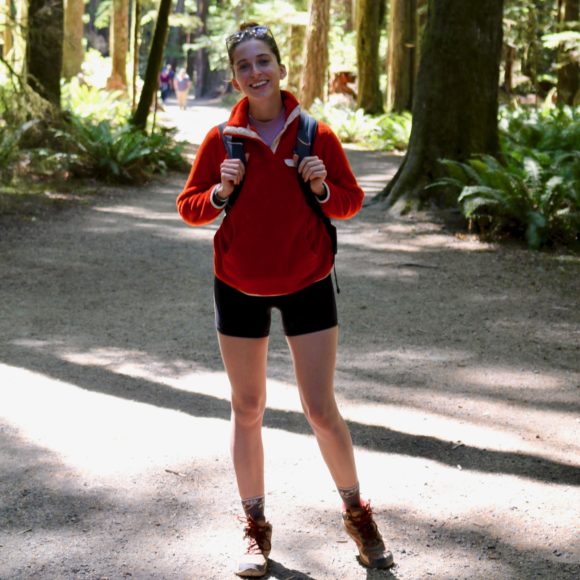
According to scholars Monique Sosnowski—a Ph.D. candidate in criminal justice at the CUNY Graduate Center—and John Jay Assistant Professor of Criminal Justice Dr. Gohar Petrossian, pollution is not the fashion industry’s only crime. In a new article, they investigated what species were being utilized for the fashion industry, which is worth over $100 billion globally, in order to better understand the damage the industry causes to wildlife and wild places.
Sosnowski and Petrossian looked at items imported by the luxury fashion industry and seized at U.S. borders by regulatory agencies between 2003 and 2013. Their study found that, during that decade, more than 5,600 items incorporating elements illegally derived from protected animal species were seized. The most common wildlife product was reptile skin—from monitor lizards, pythons, and alligators, for the most part—and 58% of confiscated items came from wild-caught species. The authors also found that around 75% of seizures were of products coming from just six countries: Italy, France, Switzerland, Singapore, China and Hong Kong. The heavy involvement of the European countries was unexpected, according to Dr. Petrossian, because they are key players in fashion design and production but “don’t generally come up in broader discussions on wildlife trafficking.”
THE SCIENCE OF WILDLIFE CRIME
The paper applied “crime science, a body of criminological theories that focus on the crime event rather than ‘criminal dispositions,’ to understand and explain crime. The overarching assumption is that crime is an opportunity, and it is highly concentrated in time, as well as across place, among offenders, and victims,” says Dr. Petrossian. Their scientific approach enabled the authors to analyze patterns and concentrations in wildlife crime, which Sosnowski notes is among the four most profitable illegal trades.
“We are currently living in an era that has been coined the ‘sixth mass extinction,’” she says. “It is crucial that we understand the impact that humans are having on wildlife, from habitat loss to the removal of species from global environments. Fashion is one of the major industries consuming wildlife products.”
A background in wildlife conservation, including unique experiences like responding to poaching incidents in Botswana and rehabilitating trafficked cheetahs in Namibia, led Monique Sosnowski to a Ph.D. in criminology; she wanted to move beyond a more traditional conservation-informed approach to address what she’d seen in the field. Working with Dr. Petrossian on a series of studies applying crime science to wildlife crimes has given her a broader view of the effects of wildlife-related crime on global ecosystems.
CREATING SOLUTIONS, SAVING WILDLIFE

Why is it important to understand what species are most commonly used in luxury fashion products, and where they are coming from? A study like this one provides information about trends that policymakers can use to strengthen or focus enforcement and inform better understanding of the issues. Sosnowski calls this “the key to devising more effective prevention policies.”
Currently, global regulation of the trade in wildlife products, including leather, fur, and reptile skin that come from species both protected and not, is the province of the Convention on International Trade in Endangered Species (CITES); this treaty aims to ensure that international trade in wild animals and plants does not threaten their survival. But the treaty is limited in scope.
“Given the prevalence of exotic leather and fur in fashion, we believe CITES and other regulatory bodies should enact policies on its use and sustainability in order to protect wild populations, the welfare of farmed and bred populations, and the sustainability of the fashion industry,” Sosnowski says.
Consumers also have a role to play. “We are all led to believe that products found on the shelves are legal, but as this study has demonstrated, that isn’t always the case. Consumers of these products are the ones who have the power to change the behaviors of a $100 billion industry. We need to ask questions about where our products were sourced, and respond accordingly.”
###
Summarized from EcoHealth, Luxury Fashion Wildlife Contraband in the USA, by Monique C. Sosnowski (John Jay College, City University of New York) and Gohar A. Petrossian (John Jay College, City University of New York). Copyright 2020 EcoHealth Alliance.
Policies Changing New York: Impact Magazine 2018-19
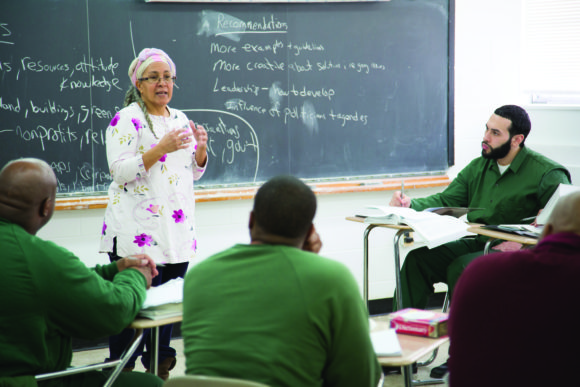
As a New York institution and part of the City University of New York, John Jay College is home to many who want to drive real-world reform to make New York communities stronger. Our unique research centers provide evidence-based partnerships and guidance that city officials and state legislators need to create better policy. Read on for a quick look at the impactful work they are doing in New York, or read the full story in our latest issue of Impact research magazine.
Easing Reentry
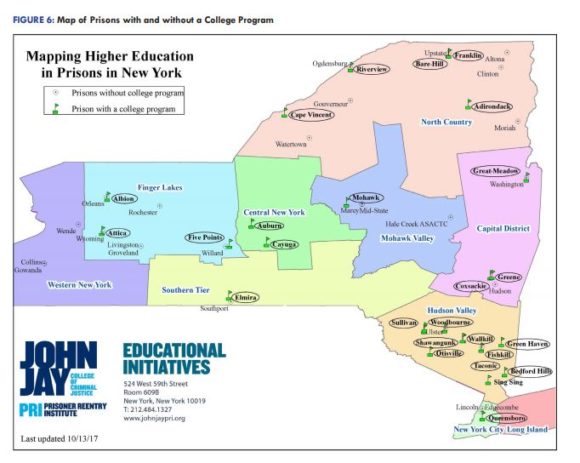
The Prisoner Reentry Institute has been a research center since 2005, when it was founded to help people live successfully in their communities after contact with the criminal justice system. The center, directed by Ann Jacobs, engages in a combination of public advocacy, direct service, and collaborative partnerships to promote a range of reentry practices, with a focus on creating pathways from justice involvement to education and career advancement.
In pursuit of that goal, PRI advocates for higher education in prisons, priming what they call the “prison-to-college pipeline.” They recently produced a report mapping higher education opportunities in New York State prisons, finding that only 3% of more than 45,000 people in New York prisons were participating in higher education programs, despite expanded funding.
PRI is also interested in post-incarceration advocacy. A work group, led by PRI’s Director of Public Policy Alison Wilkey and comprised of local stakeholders, is working to change the New York City Housing Authority’s policies excluding residents who have been arrested. The work group’s actions, including the creation of a clearer exemption application, new guidelines limiting the use of exclusions, and tenant education, have helped reduce the number of people excluded from NYCHA housing 50% from 2016 to 2018.
Interrupting Crime
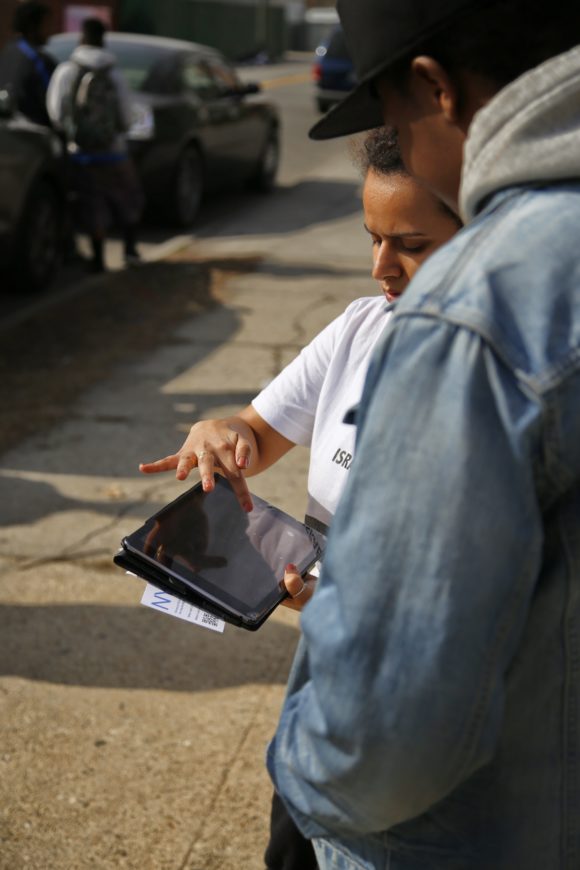
A team of Research and Evaluation Center researchers is evaluating Cure Violence, a public health approach to violence reduction.The program relies on neighborhood-based workers, often with a history of justice involvement, mediating and working with younger people in the neighborhood to keep them from going down a violent path.
“Politically, it’s a difficult program to operate,” says REC Director Jeff Butts, because city officials are often wary of Cure Violence workers’ criminal histories. But REC has found that Cure Violence sites in the South Bronx and Brooklyn have seen greater violence reductions than comparison sites. According to Butts, explaining the research and the results clearly to the public is key to shifting policy. “You can’t change policy, no matter how smart you are, just by publishing articles in academic journals.”
Less Punishment, Less Crime
Violence isn’t the only type of crime that can be reduced with less punitive solutions. Director of research project From Punishment to Public Health (P2PH) Jeff Coots holds that alternatives to incarceration can not only reduce the use of prison and jail terms, but also offer rehabilitative services to people in need. “Punishment alone is not getting us the public safety outcomes we want,” he says. “How do we identify public health-style solutions that can respond where punishment does not, and isolation will not?”
Among P2PH’s signature initiatives is a pilot project to use pre-arrest diversion for minor offenses committed by the homeless. Many of those cases were previously decided at arraignment, denying arrestees the chance to connect with needed services. The pilot has reduced the number of people arrested and increased the number connected with services like transitional housing and health treatment.
In general, Coots believes policymakers are increasingly open to health interventions as an alternative to incarceration. “We don’t want the jail to be the biggest mental health provider in our community.”
Justice by the Numbers
The Data Collaborative for Justice is invested in documenting the scale of the criminal justice footprint, in New York and a network of other cities, and

considering solutions to reduce it. DCJ explores high-contact points in the system, including pretrial detention and incarceration in New York City jails. A major project for the center has been to produce an evaluation of the 2016 Criminal Justice Reform Act, passed by the New York City Council to “create more proportional penalties for certain low-level, nonviolent offenses.” With support from the Mayor’s Office of Criminal Justice, DCJ’s evaluation shows that the CJRA seems to be achieving its aims — 90% of summonses for five high-volume offenses like noise violations and littering are now civil rather than criminal, with an associated decline in criminal warrants.
The positive impact of this legislation has the potential to push policy change in other areas by informing conversations with lawmakers. DCJ works closely with city and state agencies to gather data and make it available to policymakers so they have the resources to make evidence-based decisions. “Policy neutrality is an important part of DCJ’s mission and outlook,” says Project Director Kerry Mulligan. “That has allowed us to be a trusted broker with a diverse set of data partners.”
Among John Jay College’s research centers and projects, some researchers are building the evidence base, while others are rolling up their sleeves to help cities implement and evaluate solutions on the ground. In each case, the vital goal is making communities safer. Says REC’s Jeff Butts, “You have to put the evidence in front of [policymakers] on a regular basis in order to get the political culture to start to shift.”
For the full feature, please visit the John Jay Faculty and Staff Research page to read the whole magazine in PDF form!
Denise Thompson is Trying to Make Post-Disaster Rebuilding Better
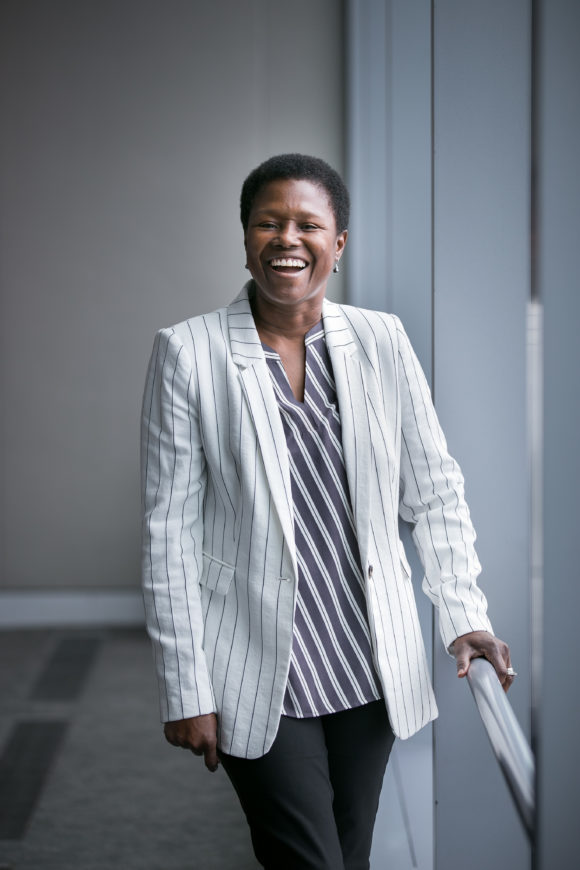 Denise Thompson is an Associate Professor in John Jay College’s Department of Public Management, and an expert on disaster management and risk reduction. Her new book, Disaster Risk Governance: Four Cases from Developing Countries, was published in July 2019 by Routledge. To learn more about where and how she does this work, you can read a profile of Dr. Thompson in this year’s Impact magazine.
Denise Thompson is an Associate Professor in John Jay College’s Department of Public Management, and an expert on disaster management and risk reduction. Her new book, Disaster Risk Governance: Four Cases from Developing Countries, was published in July 2019 by Routledge. To learn more about where and how she does this work, you can read a profile of Dr. Thompson in this year’s Impact magazine.
Read on for an edited interview with Dr. Thompson about her work related to disaster planning and recovery, and how she approached writing a book on such a complex topic:
What factors are most important to consider when planning for storms or natural disasters, whether far in the future or imminent?
Maybe the best way to answer that is to look at the disaster cycle. Mitigation, planning preparedness, response, recovery, reconstruction, and then back to mitigation. Even though I put the phases into discrete components, the cycle is integrated, not discrete. And the steps must always be revised.
Mitigation is essentially putting structural and non-structural elements in place well ahead of a storm. That includes hardening infrastructure as well as putting systems in place to make sure we can respond.
The preparedness phase gets ready for imminent disaster, including by bringing together supplies, people and other resources to respond, and making sure supplies are prepositioned where they’re expected to be needed; organizing transportation and marking routes for evacuation; and more.
Recovery includes the immediate response post-disaster, where communities plan for building or rebuilding; get schools, offices, child care and other systems back up that are required for day-to-day functioning; and bring critical services back on line, like roads, food supplies, water, and the government.
Finally, reconstruction is a process of longer-term rebuilding. Ideally, this includes innovation to ensure communities are “building back better,” and is an extremely integrated, wide-spectrum process that moves toward hardened infrastructure and sustainable processes. This happens after an assessment is done of the damage, and must be integrated into planning.
One example is in the Bahamas. Because they are unable to rebuild exactly the same as before the storm hit, the government is thinking about putting some infrastructure underground, like communication towers, to create some protection from the next storm.
How do you factor in climate change when considering ongoing efforts to prepare for and recover from natural disasters?
Well, what is a disaster? We have to think about that. I was listening to a story on NPR, the bird population of the U.S. shrank by one billion birds – that’s climate change. And even epidemics. Certain bacteria and invasive species thrive in certain temperatures. So it’s a disruption, not only of the human ecosystem, but also of the animal ecosystem.
When we talk about disasters, we tend to talk about natural disasters, but it’s so much bigger. We’re not even talking about man-made disasters, like terrorism or cyberattacks, which could be catastrophic. Those are disasters, too, but man-made.
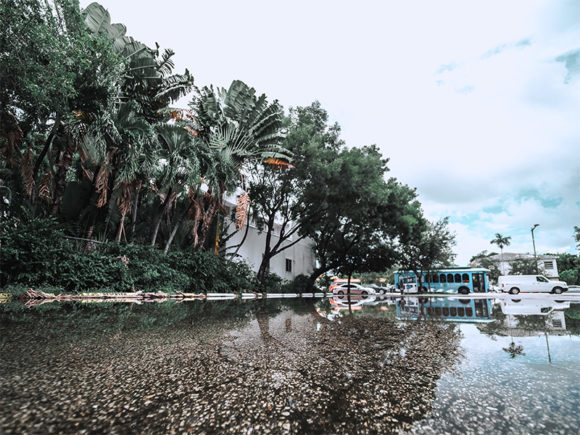
Given the trends in natural disasters associated with climate change (e.g., hurricanes and tropical storms are more frequent, and more frequently of record intensity levels), are there places that are becoming unlivable, or that should be abandoned?
Yes, there are places that should be abandoned. A lot of these countries, their populations are concentrated along the coast, and there are vulnerabilities. Like schools that are flooded in every single storm of course should not have been built where they are.
Are issues of rebuilding and relocation tied in with race and class?
These issues are very tied to rebuilding in many places. You can also look at a place like Flint – race, class and vulnerability are interlinked. Or Newark. Usually, African Americans, Latinos and other minorities are more vulnerable to these disasters. And it’s harder for the poorest communities to recover – the same event has a more drastic impact. The rich have more resources.
In island states, the line is more blurred. The interiors are more rugged, which means most people tend to locate along the coastline, so it’s not as clear-cut an issue as in, say, Hurricane Katrina. But there’s an issue of moral hazard; even knowing that it’s dangerous, people build anyway, knowing that somebody will help them to rebuild. Like the government, or insurance money. So people tend not to bother to plan for disasters.
However, organizations have been exploring insurance, like livelihood protection, for poorer people. For example, the Caribbean Catastrophic Risk Insurance Facility (CCRIF) pools resources from many countries in the region, who pay into this fund. They are disbursed to governments directly, to help pay for rebuilding. Commercial facilities might be getting out of disaster insurance, but others are stepping into that void.
Is there an ideal balance between recovery efforts provided by home governments versus outside aid?
I don’t know if there’s an ideal balance. Governments operate at different levels – national, regional, local, community, household – so we usually say that the government closest to the people should be equipped to help them. But what we find is that often the governments closest to the people are themselves incapacitated by whatever event took place, and they’re not able to help. And if you go one level higher, they may be able to help in some ways but not others, and so on. In cases like those, outside help is needed; the quantity depends on the issue.
Is there a useful role for individual aid?
There’s a useful role, but it’s hard to manage spontaneous volunteers. They may put themselves in harm’s way. Typically we say, go through an entity to help. Most agencies right now want money, because they can best divert it to where it’s needed. That may be potable water, or a sanitary facility, or helping women or children get out of situations where they’re more vulnerable thanks to the disaster. It may be a number of things.
When you talk about disaster planning, mitigation, risk reduction, it’s a big, involved process, and very complex. It’s hard to get a handle on it, but agencies do it. Their effectiveness depends on resources. And no one place has the level of resources needed. That’s why governance systems are important, to bring all these things together – the resources, money, people, institutions, laws, and the formal and informal arrangements that must be made to keep people safe.
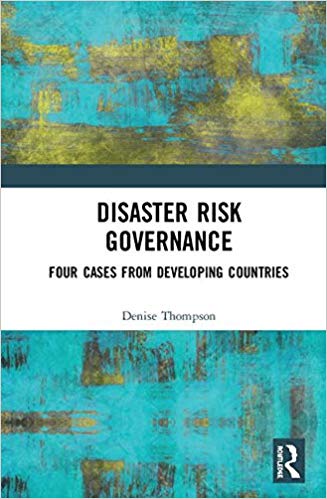 This is obviously a vastly complex topic that touches on every area you can imagine. How do you write a book about that? Is your book more broad, or is it more of a tool?
This is obviously a vastly complex topic that touches on every area you can imagine. How do you write a book about that? Is your book more broad, or is it more of a tool?
The idea for the book came when I was doing a lot of work in the Caribbean and seeing a lot of money being spent, with a minimal return on investment. When the next event came, we were still dealing with the same issues. Activities were happening piecemeal, done by aid agencies, governments, the UN. And preexisting factors, like colonialism, undermined institutions. These were antecedents to what we’re seeing now, but we never could put them together, because we’re always trying to put out fires.
Disaster management systems happen in context of the country, and I realized that countries with weaker governance systems also have weaker disaster management systems. Governance is an umbrella term, comprising all the institutions, systems, actors and processes that come together around disasters.
So what I wanted to do was come up with a number of variables we could use to pinpoint areas we could shore up to improve disaster risk reduction and outcomes. I looked at institutions as a key component in that, like legislation, insurance, security. I also talked about labor policy, networks, economic investment – all these things may not be part of disaster policy, but they support it.
Why did you pick those four specific countries – two in the Caribbean, two in Sub-Saharan Africa – to feature in your book? Did you find some similarities there?
When I came into academia in 2008, there wasn’t much literature on poor countries. And that is not specific to disaster management. The voice was missing. I thought, if I looked at the sub-Sahara and the Caribbean, I would be better able to come up with a governance framework that actually works for developing or poorer countries.
The similarities I picked up are mostly in the institutional and informal aspects. For instance, indigenous peoples from the Caribbean and from Africa were similar in that they had communities with their own laws and customs that may be opposed to planning around disasters. Also, these countries have a legacy of corruption – not all poor countries, some rich countries have higher rates of corruption – but still, government ineffectiveness, government inaccessibility to their populations, these things were comparable. Those cause inefficiencies and waste in the system, they cause people to take longer to recover from disasters. It’s complex and messy.
In the book you have to try to manage the multiple components; you can’t write on everything but you can pick out the salient things. I hope that’s what I was able to do.
Is it disheartening, to see inefficiencies and to see problems getting larger every year, problems that we’ve caused ourselves and failed to find effective solutions to thus far?
Yes, but at the same time, we’re working more closely with communities, and households and individuals, and I think that’s where it has to happen. So while governments create the policies, the infrastructure and the systems, the ecosystem is bigger, with subsystems within it. If you work at the micro level, you can shore up the entire system.
In the Caribbean and in Africa, there are regional agencies that are the real workhorses and innovators – the East African Commission, the African Union, Caribbean Disaster and Emergency Management System, CARICOM. CCRIF, for example, is one of the first in the world to push for countries to pool their resources. Other regions, like Southeast Asia, are doing a similar thing. All of these groups come together to actually build and pilot things.
Gerald Markowitz shines light on corporate bad behavior
Distinguished Professor of History Gerald Markowitz and long-time writing partner David Rosner, a Professor of Sociomedical Sciences at Columbia University, have been researching industrial pollution and contaminants since the early 1970s. Their first jointly-authored book, Deadly Dust: Silicosis and the Politics of Occupational Disease in Twentieth-Century America, explored historical evidence of the lung disease silicosis, which is a hardening of the lungs due to inhaling dust found in sand or rock. Thanks to Deadly Dust, Markowitz and Rosner came to the attention of lawyers bringing workplace safety suits on behalf of construction workers suffering from silicosis, launching a long career of research and expert testimony on occupational disease and toxic substances. In the early 2010s, the duo began an investigation into asbestos and asbestos-related disease.
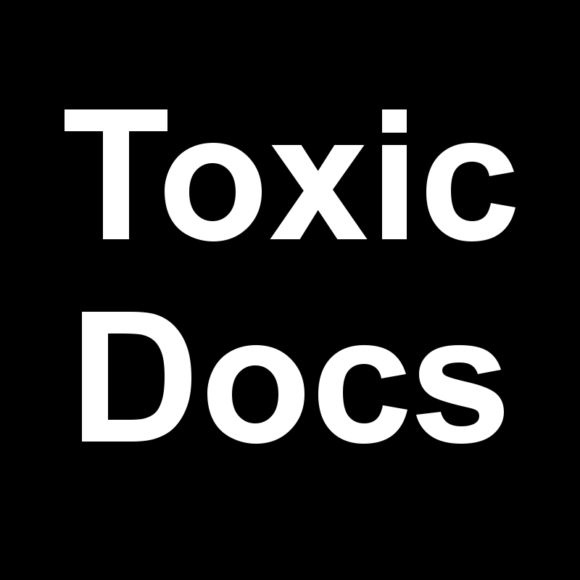 Their work turned up hundreds of articles on the dangers of asbestos, now a watchword for poisons that can lurk in our homes, dating from 1898 to the present. Markowitz and Rosner also referred to corporate records and documents made public through court discovery; a more recent project called ToxicDocs is an open-source, online database of more than 15 million pages of documents related to silica, lead, vinyl chloride, and asbestos that were previously not easily accessible.
Their work turned up hundreds of articles on the dangers of asbestos, now a watchword for poisons that can lurk in our homes, dating from 1898 to the present. Markowitz and Rosner also referred to corporate records and documents made public through court discovery; a more recent project called ToxicDocs is an open-source, online database of more than 15 million pages of documents related to silica, lead, vinyl chloride, and asbestos that were previously not easily accessible.
In June, Markowitz’s expertise was featured prominently in the American Journal of Public Health, in an article detailing a representative episode in the history of the struggle between industry and regulators. In “Nondetected: The Politics of Measurement of Asbestos in Talc, 1971-1976,” Markowitz and his co-authors describe the years-long interval between the talc industry’s acknowledgement that asbestos is toxic and their taking action to protect consumers, and the subsequent conflict between the Conflict, Toiletry, and Fragrance Association (CTFA) and the U.S. Food and Drug Administration (FDA) over regulating appropriate methods for detecting asbestos contamination in consumer talc products and setting safety standards.
The focus of the article, said Professor Markowitz, “was that the cosmetic industry, I think very consciously, used this concept of nondetected, which we as consumers think of as ‘no asbestos in the talc,’ but nondetected could mean enough asbestos in the talc to cause disease. And that’s what the industry understood, but consumers did not.”
The CTFA’s 1970s victory in lowering detection standards and advocating for self-regulation is still bearing fruit; recent lawsuits against talcum powder manufacturers allege the household product causes cancer due to asbestos contamination. As recently as 2018, courts awarded plaintiffs record damages of close to $4.7 billion in a case against manufacturers, capturing public attention.
We sat down with Professor Markowitz to talk about his work researching industrial poisons and about corporate responsibility to the consumer in today’s world. Read on to hear from Professor Gerald Markowitz in his own words.
Why do you believe that talc product manufacturers continued to accept a lower standard for asbestos eradication despite known health dangers, not to mention the risks of litigation?
When they developed this idea, in the 1970s, their basic argument was that there should be as little federal regulation as possible. [The CTFA] was able to lobby the federal FDA that the technologies that the FDA was proposing were not able to be completely accurate, would give too many false positives, would take a long time to do, and would be costly. So they proposed their own method. And they’re able to eventually convince the FDA that it should not be federal but industry regulation.
But what they admit privately is that their method, which is not as demanding as the FDA’s proposed method, was not necessarily accurate and was not necessarily consistent. So to a certain extent, they were really able to forestall regulation by claiming that they could do as good a job [of detecting asbestos in talc products], even though they themselves admitted that they could not do as good a job. And by the very nature of their method, they were going to uncover much less asbestos than the FDA’s method was capable of uncovering.
Do you think there’s something special about the current moment that made this article of particular relevance?
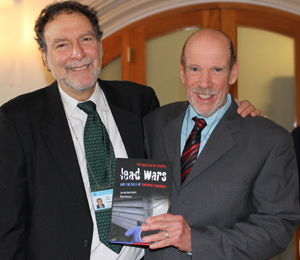
I think it was the variety of ways that deregulation has had an impact on the health and welfare of people in the United States and other parts of the world. To the extent that these articles could help to call attention to that happening, they are important. The advantage of history is that we are able to really see the process unfold in a kind of detail that we don’t necessarily have in observing regulatory of anti-regulatory actions taking place at the moment we’re living in. That level of detail I think is instructive in terms of being able to understand how similar things could be happening today.
Would you like to see this history galvanize some kind of action?
The most important thing that can happen is that people really have to take politics seriously. The United States has a long history of mass movements really demanding and achieving fundamental reforms. Just going back to the 1960s, the demand for civil rights, the efforts of people to get voting rights for African Americans, that didn’t happen simply because Congress decided to pass a law; people were demanding it in mass actions. These are really instructive in terms of what can happen today, and even what is happening today.
Pieces accompanying your article in the AJPH, such as the one by former Assistant Secretary of Labor for the Occupational Safety and Health Administration David Michaels, suggest that corporate influence is getting stronger, to the detriment of consumer and public health. The current administration has loosened or degraded regulatory standards for a variety of products — should we expect more legal battles down the line?
Yes, absolutely. Since the 1970s there has been a very sustained effort by many businesses to oppose regulation, and you get the classic statement by Ronald Reagan, when he said that ‘government isn’t the solution, government is the problem.’ I think the legacy of that, of the push for deregulation as a means of stimulating the economy and freeing business to innovate and all of those kinds of ideas, I think the legacy of that is going to be a variety of problems, not only in consumer products but in environmental damage. It’s going to be for workers, for consumers, for people living in communities where toxic substances are going to be released, we’re going to be suffering those consequences, and the unfortunate thing is that it’s only going to be remedied in retrospect.
And to add one other element, we know that the burden, especially of environmental pollution, toxic waste, global warming, is going to affect poor communities and communities of color to a much great extent than richer communities. At a college emphasizing social justice, this becomes an even more vital issue.
Are there other consumer products known to include dangerous adulterants that are similarly being ‘underregulated?’
BPA [bisphenol A, a chemical used to make certain plastics since the 1960s] is one example; a lot of household cleaners and flame retardants are another one. We’ve discovered that flame retardants are extremely dangerous to people, and that people have them in their bodies. Formaldehyde is another one; there was a scandal about formaldehyde in temporary housing given to people after Katrina, that was unsafe.
There are lots of things we have clues about, but the real scandal is that chemicals are being produced and we’re using them in very large quantities, that have never been tested. And in the United States we have this philosophy, innocent until proven guilty. It’s the same philosophy with chemicals — they are innocent until proven guilty. The Europeans have a system, chemicals can’t be introduced until they’re proven safe. It’s a basic difference in philosophy that companies need to prove that something is safe before they can experiment on us and ensure it doesn’t cause cancer. But in the United States they say that if it does cause cancer, we’ll take it off the market, but that’s very difficult to prove and you’ve done the damage already.
You note in your article that talc researchers were disappointed when their work became known to the industry, but that ‘nothing was done until the results became public.’ Do you think it remains true in cases of corporate wrongdoing that nothing is done until the public finds out all the information?
In the 1970s, there was this wonderful act passed called the Freedom of Information Act (FOIA). The fundamental principle behind that was that if you shine the light of publicity and information and people have that, then they have the ability to act in their own interests. One contribution that historians can make is, using the older historical records, we can cast a light on activities and attitudes and actions that permit people to see what is going on and demand change.
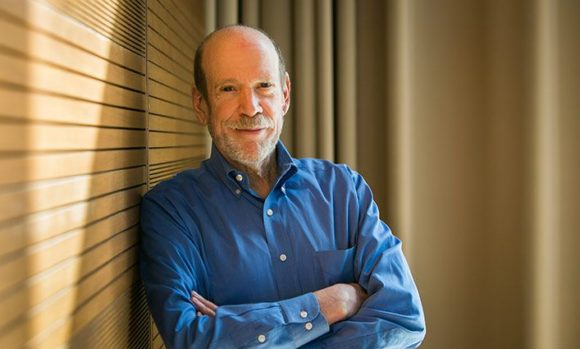
Gerald Markowitz is a Distinguished Professor of History in the Interdisciplinary Studies Department at John Jay College and the Graduate Center of CUNY. His research focuses on the history of public health in the 20th century, environmental health, and occupational safety and health. He has authored a number of books, most recently Lead Wars: The Politics of Science and the Fate of America’s Children, also in cooperation with David Rosner.
John Jay Featured Grant – Reducing Prison Overcrowding: Jeff Mellow + Deborah Koetzle
John Jay faculty and staff came together for a reception on May 14th to honor 76 of their own who received major and external grants and awards in 2018. The funded projects are a testament to the hard work John Jay’s community devotes to research and to honorees’ dedication to studies and creative work that strengthen the scholarly fabric of the institution. The awards funded projects of all types, from those with potential therapeutic implications to those that could change international policy, and more.
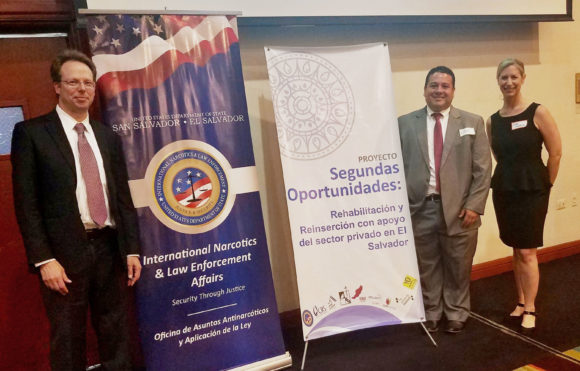
Among the honorees were Dr. Jeff Mellow and Dr. Deborah Koetzle. Their grant, from the U.S. Department of State’s Bureau of International Narcotics and Law Enforcement Affairs, took them to El Salvador to work on alleviating the severely overcrowded conditions in many Salvadoran prisons.
Both Dr. Mellow and Dr. Koetzle have been working to apply evidence-based, empirically-verified practices to corrections for many years, so when the opportunity came to apply their knowledge gained from research in the United States to an international setting, they knew they had to take it. The project took place in cooperation with El Salvador’s National Criminological Council and Director of the General Office of Penal Centers.
Prison overcrowding
El Salvador’s rate of incarceration is among the highest in the world — second only to the United States, with more than 600 out of every 100,000 persons incarcerated. Although the overcrowding rate is slowly coming down thanks to the construction of new prison facilities, the researchers described unhealthy conditions in some prisons. Some facilities were at 800 or 900 percent capacity, with bunks overfilled with bodies, increased risk of infectious disease, and insufficient room for programming or recreation.
Dr. Koetzle described the severely overcrowded prisons as “strangely quiet” and very still, as inmates have little room for movement. “No one should have to live in those types of conditions,” said Koetzle. “But the other side of that is really seeing the government and the system putting forward meaningful, genuine efforts to address it.”
Releasing the bottleneck
The counterpart to overcrowded higher security institutions are the granjas, or minimum security prisons, to which incarcerated individuals can transition as part of their rehabilitative journey toward release. Their gradual reintegration and movement through the system requires a protracted process of repeated assessments. “Inmates have to both finish a minimum of a third of their sentence, and also engage in very extensive programming to move from closed prisons to open prisons,” said Mellow. “But the problem is there’s a bottleneck, and only about 6% of the inmates, out of 40,000, are in the open prisons.”
As part of the government’s effort to ameliorate prison conditions and move people through the system more quickly, the researchers were engaged to hire, train and manage criminological teams — composed of one lawyer, one educator, one psychologist and one social worker — that helped to build capacity to assess inmate progress toward rehabilitation while drafting more than 2,000 proposals to improve the process based on empirical data collected throughout.
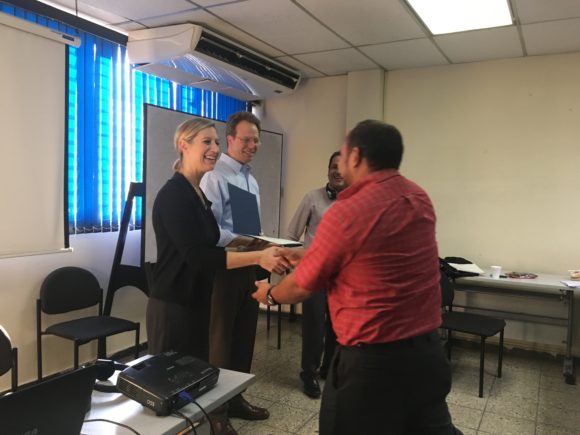 “Our goal was to improve the correctional system and policies, to maintain our relationships down there, and help [the government] to introduce additional evidence-based practice and risk assessments that we think can really help them open up bottlenecks and be more efficient and effective in identifying low-risk individuals to move them through the rehabilitative phases,” said Mellow.
“Our goal was to improve the correctional system and policies, to maintain our relationships down there, and help [the government] to introduce additional evidence-based practice and risk assessments that we think can really help them open up bottlenecks and be more efficient and effective in identifying low-risk individuals to move them through the rehabilitative phases,” said Mellow.
They brought to the process many collective years of experience in working to introduce standardized, evidence-based practice to the U.S. correctional system. Both professors also brought back lessons learned from their time in El Salvador that could translate to better practice in the United States, emphasizing the ways Salvadorans involved in the justice system are still encouraged to feel a part of their community on the outside. “They have families much more engaged, and they are really trying to provide for employment opportunities,” remarked Koetzle. “I think on those two fronts in particular, we could learn.”
Mellow also outlined elements of the rehabilitation program, broadly called “Yo Cambio,” that he felt were exceptional, including “conjugal visits, which we rarely do in the United States, and focus on vocational education. They also have a Fair Day where inmates will go out to sell all the wares they’ve made inside the prison, and the national Olympic game day. You can see that they are really trying to show that inmates are part of the community. They’re people.”
The life of a PI
Working on a large international grant was both a challenge and a source of immense satisfaction. “You’re wearing 100 different hats,” said Mellow, who was Primary Investigator on the grant. “Everything from drafting subcontracts to thinking about lunch for the trainings, to dealing with messages every day, getting everybody paid, and dealing with the funder. Plus doing the actual work, and writing the quarterly and final reports and analyzing the evaluation. If you think about it, you’re managing 40-something people.”
It was “not typical to have so many staff in institutions for this length of time,” added Koetzle, the project’s Senior Advisor. “[And] engaging in international work stretches you a little bit differently.” They took seven trips to El Salvador during the two-plus years of their grant work, and talked about the greater investment of resources, time and flexibility needed to pull off a successful overseas project.But the challenges created by managing a large grant from so far away were paired with a huge pay-off. Both Mellow and Koetzle agreed this was one of the most rewarding projects they’d ever undertaken, and talked about the valuable insights they had learned from working in a different context and system. They also had only positive things to say about their team of local staff, both about their capabilities and their constant enthusiasm and dedication.
“That’s something that really stood out — the number of times they thanked us for giving them the opportunity to help their country,” said Koetzle.
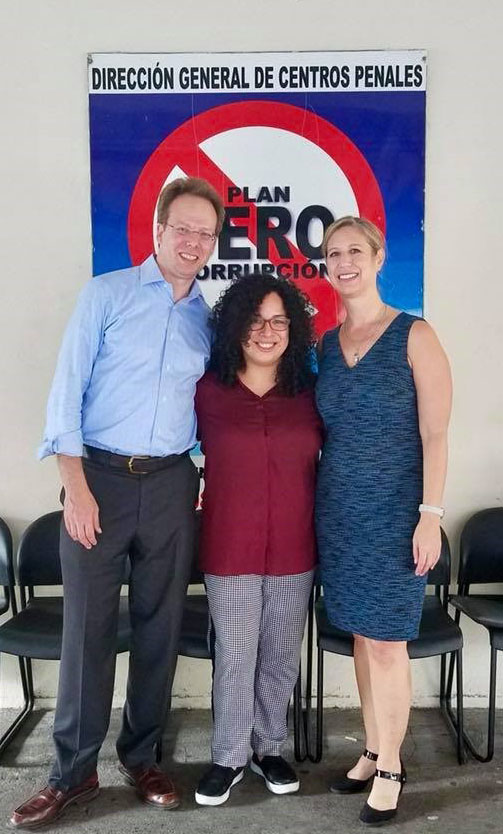
Next steps
Now that the grant has ended, as of February 2019, Dr. Mellow and Dr. Koetzle, along with co-PI and Senior International Officer in John Jay’s Office of International Studies and Programs Mayra Nieves and their program coordinator, PhD candidate and Salvadoran native Lidia Vásquez, are looking ahead. They are working on publishing their results with a Salvadoran university, in Spanish, and would like to see some of their recommendations translated to national policy. Their greatest hope, though, is to find continuing funding to keep doing the work to which they’ve dedicated so much time over the last two years, and perhaps even extend its scope to other nations in Central and South America with similar overcrowding and assessment challenges in their own criminal justice systems.
“We are hoping for the project to come back, “said Mellow. “That is our goal.”
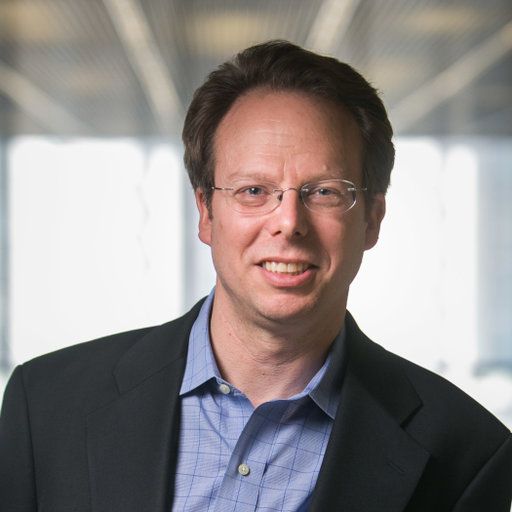 Dr. Jeff Mellow is a Professor in John Jay College’s Criminal Justice Department, Director of the Criminal Justice MA Program, and a member of the doctoral faculty at the CUNY Grad Center. His research focuses on correctional policy and practice, program evaluation, reentry, and critical incident analysis in corrections.
Dr. Jeff Mellow is a Professor in John Jay College’s Criminal Justice Department, Director of the Criminal Justice MA Program, and a member of the doctoral faculty at the CUNY Grad Center. His research focuses on correctional policy and practice, program evaluation, reentry, and critical incident analysis in corrections.
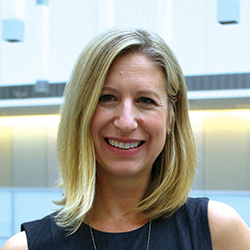 Dr. Deborah Koetzle is an Associate Professor in the Department of Public Management at John Jay College and the Executive Officer of the Doctoral Program in Criminal Justice. Her research interests center around effective interventions for offenders, problem-solving courts, risk/need assessment, and cross-cultural comparisons of prison-based treatments.
Dr. Deborah Koetzle is an Associate Professor in the Department of Public Management at John Jay College and the Executive Officer of the Doctoral Program in Criminal Justice. Her research interests center around effective interventions for offenders, problem-solving courts, risk/need assessment, and cross-cultural comparisons of prison-based treatments.
Maria J. D’Agostino — Negotiating Bias in the Workplace
If gender inequity is baked into today’s workplace, what can John Jay students and other Master in Public Administration (MPA) candidates do to fix the problem? Dr. Maria D’Agostino, with co-authors Helisse Levine (LIU-Brooklyn) and Meghna Sabharwal (UT-Dallas), published an article in the Journal of Public Affairs Education in March that represents the first step toward answering that question.
Dr. D’Agostino, an Associate Professor in the Department of Public Management, has focused her recent research on women in public administration. Not only are women — along with other persons whose gender presentation isn’t traditionally male — underrepresented in leadership and management roles but, according to the theory of Second Generation Gender Bias, the workplace isn’t even built to accommodate the needs of anyone but men.
Longstanding cultural beliefs and biases, formed over many decades, put up invisible barriers to women’s advancement, and workplace structures and practices can inadvertently favor men. One such practice is negotiation, which figures prominently in 21st century workplaces. When negotiating for starting salaries and other benefits, studies show that men see better negotiation outcomes than women, and that these differences are more due to stereotyping and structural bias than to behavioral differences. Negotiated Order theory, which has also heavily influenced D’Agostino’s work, suggests that the results of biased negotiations build up over time, meaning that when women or people of marginalized genders start out behind, they usually stay behind.D’Agostino believes that MPA programs are a great place to take on these challenges. “A lot of experimentation goes on in the public sector,” she said, giving examples of vital pieces of legislation that have trickled down from government policy to private sector workplaces, including Title IX, Paid Family Leave, and New York City’s 2017 law barring employers from asking about applicants’ salary history.
According to D’Agostino, MPA graduates are often perfectly placed to address inequality. “[Graduates] work in city, state, and federal government, they work in nonprofits, and in the private sector. The essence of public administration is serving the public and the common good, and they are the face of that; they are the decision-makers in terms of creating policy that becomes city, state, and federal law, which can even spread to the private sector. They are both creating and implementing policy, so they have a big impact on the future.”
It is therefore a concern for D’Agostino and her colleagues that more MPA programs aren’t tackling issues of workplace inequality head on. In her study, researchers surveyed MPA administrators to find out how many programs around the country offer courses in negotiation, let alone courses that incorporate elements of gender bias into coursework. They found that “none of the programs offered a standalone course on gendered negotiation, and those that offered courses on negotiation generally only focused on transactional portions,” said D’Agostino.
Her suggestion? Incorporate second generation gender bias into curricula as a core competency for all MPA programs. Raising awareness among students in the field could lead to big changes inside workplaces, but also in the ivory tower. “Academics could do more research, which could inform practice, which would affect training, which would impact the field in terms of gender equity.”
These are big dreams for sweeping change in MPA programs and in offices across the U.S. For now, D’Agostino and her colleagues are developing a conceptual framework for talking about the issue. Her next step is to interview both men and women in various positions in seven states, to try to understand the implications of second generation gender bias as they play out in real workplaces and to hear about real workers’ experience with bias.
You can find the full article, “Gender in negotiation: Preparing public administrators for the 21st century workplace,” online at the Journal for Public Affairs Education’s website.
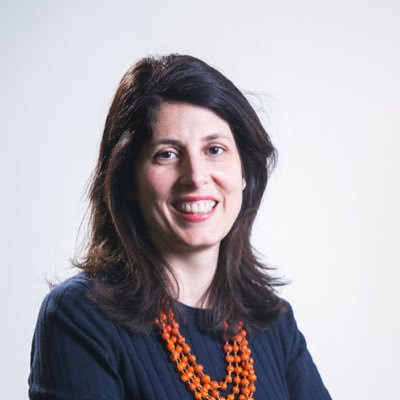 Maria D’Agostino is an Associate Professor in John Jay College’s Department of Public Management. She is also the co-founder of Women in the Public Sector at John Jay, a program which educates, engages, and fosters a consortium of students, faculty, public service practitioners, and community members interested in women in public service. It promotes gender equality and provides opportunities to address gender issues in public service.
Maria D’Agostino is an Associate Professor in John Jay College’s Department of Public Management. She is also the co-founder of Women in the Public Sector at John Jay, a program which educates, engages, and fosters a consortium of students, faculty, public service practitioners, and community members interested in women in public service. It promotes gender equality and provides opportunities to address gender issues in public service.
Dr. D’Agostino is the co-recipient, with WPS co-founder Dr. Nicole Elias, of the 2018-19 Inaugural Presidential Student-Faculty Research Collaboration Award from John Jay’s Office of Student Research and Creativity, for the examination of gender equity in municipalities. Her recent research has focused on women in public administration, including a 2018 co-edited book, Governing in a Global World: Women in Public Service.
CUNY Graduate Center Hosts Press Briefing by Immigration Experts
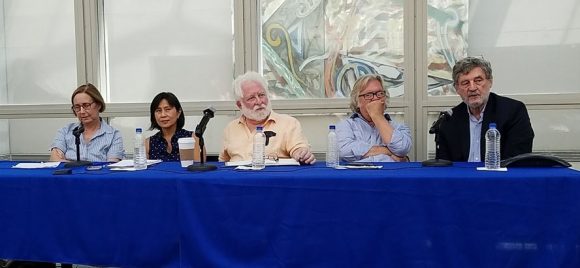
August 8, 2018 – The Graduate Center of CUNY has the benefit of some of the best immigration scholars in the country. Ahead of the 2018 midterm elections, in which this contentious issue will play (and has already been seen to play) a big role, six distinguished faculty experts on immigration sat down to brief the press on a variety of issues surrounding evolving immigration policy under the Trump administration and related issues, including demographics, economics, and the sociocultural experience of immigrants in the United States.
The panel kicked off with CUNY Graduate Center Distinguished Professor of Sociology Richard Alba, who introduced the idea that immigration policy under President Trump is the most restrictionist and selective this country has seen since the inter-war period of the 1920s. However, he suggested that there are a number of structural constraints on this administration’s ability to push immigration restrictions too far. These include business’s need for new workers, both skilled and unskilled; demographic indicators of an impending dearth of young workers; and a lack of political will even among a Republic Congress to enact major immigration legislation.
Next, David Brotherton, a professor of sociology and criminologist from John Jay College, brought up the idea that the “deportation regime” under Donald Trump is not unique in the history of the United States. He noted earlier examples of deportation- or exclusion-oriented federal policy, including the 1996 Immigrant Responsibility Act, Indian Removal Act, and the 19th century Chinese Exclusion Act. Dr. Brotherton went on to discuss the origins of the Trump Administration’s restrictive immigration policies, particularly the president’s campaign tactics of stoking panic in a segment of the population that feels insecure about their place in society. He emphasized that this strategy represents only the latest in a series of moral panics in American history, calling back to the War on Drugs and earlier rhetoric about the dangers of young black and Latino men.
Dr. Brotherton described U.S. Immigration and Customs Enforcement (ICE) as arguably the “largest police force in the United States.” ICE’s detention and deportation of immigrants is retroactively punishing many non-native Americans for crimes in their pasts; because these individuals have since put down roots in the country, with families, jobs and wider communities that are hurt when they are suddenly taken away, the policy is cruel. For this reason, Dr. Brotherton has acted as an expert witness since 2007, testifying to the effects of deportation on the individuals detained, their communities, and even their representation.
A second immigration project that Dr. Brotherton is currently engaged in is “Social Anatomy of a Deportation Regime,” in which he collaborates with Graduate Center faculty to treat New York City – a sanctuary city, and the only city that guarantees representation to immigrant detainees – as a case study. The project aims to look at this problem from all angles and account for many perspectives.
The next commentator was Margaret Chin, a professor of sociology at Hunter College, who focused on the problem of “glass and bamboo ceilings” that stand in the way of Asian-Americans’ achieving educational equity in New York City. She emphasized the importance of taking race into account when designing programs, such as student tracking and race-conscious admissions.
Nancy Foner, Distinguished Professor of Sociology at Hunter College, is the author of a number of books on immigration. During the briefing, she strove to correct immigration myths that are being spread by the president and members of his administration. First, that immigrants are criminals; in fact, immigrants commit less crime than native-born Americans (excepting immigration infractions), and cities and neighborhoods with higher concentrations of immigrant populations have lower rates of crime that comparable neighborhoods. Second, that today’s immigrant populations aren’t learning English; the “three-generation model” continues to be accurate in describing language-learning patterns in immigrant families. The United States can be called a “graveyard of languages” because immigrants tend to lose their native tongues in favor of English – typically by the third generation, individuals are mostly monolingual in English.
Debunking these myths, according to Dr. Foner, is important to reducing the hostility toward immigrants upon which the administration’s restrictive immigration agenda is predicated. She emphasized that social scientists and journalists alike have a responsibility to help publicize the truth about immigrants and their contributions to society.
According to Philip Kasinitz, a Presidential Professor of Sociology at Hunter College, the underlying strategy of the Trump Administration on immigration is difficult to understand, in that much of the policy is self-contradicting. He noted several key contradictions around the thinking on immigration today. For example, the current moral panic conflating immigrants, illegality and crime comes at a time when crime rates – particularly violent crime – is way down. Americans are also increasingly supportive of immigrants and their participation in society, but increasingly make a distinction between legal and illegal, creating a class of people involved socially, economically and culturally in our society but not politically, a fact that is, in his view, bad for a democratic society. Finally, Dr. Kasinitz talked about the generational factors behind a society that is increasingly diverse, but which at the same time harbors extreme anti-immigrant sentiments.
John Mollenkopf, Distinguished Professor of Political Science and Sociology, also noted contradictions inherent to the views of an older, white segment of the population: their anxiety about allowing immigrants into the country is not in their economic best interests, as many are increasingly dependent on low-wage immigrant labor for their care. As a scholar of the acquisition and use of political power, Dr. Mollenkopf opined that the best way to limit the ability of Republicans in Congress to build a base around anti-immigrant sentiment is to mobilize the increasing numbers of immigrant-origin voters and bring new constituencies into the electorate. In New York City, for example, the majority of the electorate is of immigrant origin, but newer immigrants have not yet organized to develop the same amount of political influence as groups that have been in the United States in large numbers for longer.
The panel wrapped up with questions from the audience. In particular, the discussion touched on the movement to abolish or reform U.S. Immigration and Customs Enforcement (ICE), an idea that has received some popular attention among Democrats in the lead up to the 2018 midterm elections. Dr. Brotherton said that “a critical mass of people has disappeared” in Latin American and Central American communities, and immigrants across the country have changed their routines out of fear of the agency. Dr. Kasinitz clarified that, despite popular belief, the number of deportations has not risen; rather, the length of immigrant detentions has grown substantially due to a lack of capacity in immigration courts to process detainees. All agreed that more dramatic action or a greater groundswell of support for reform is needed to signal that ICE’s actions are not acceptable to a majority of Americans.
For more information about the immigration research coming out of the CUNY Graduate Center, please visit the GC Immigration page.
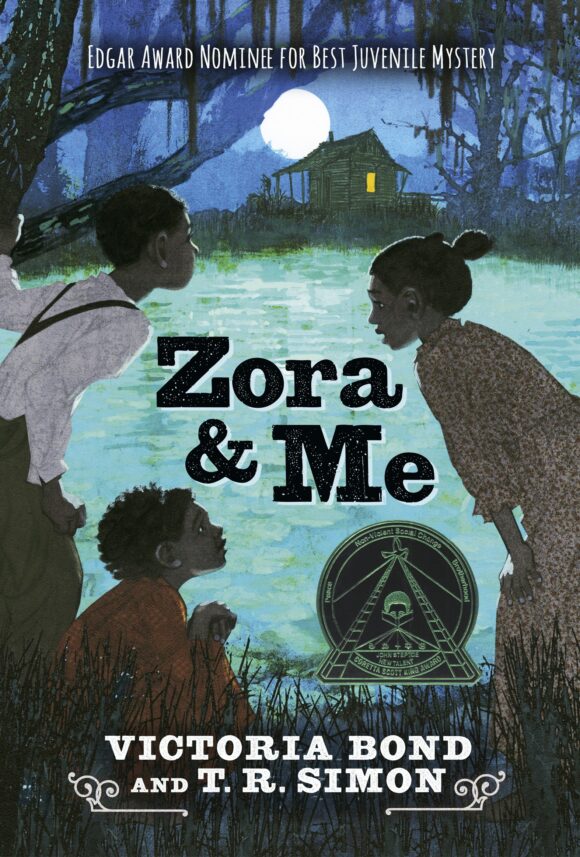
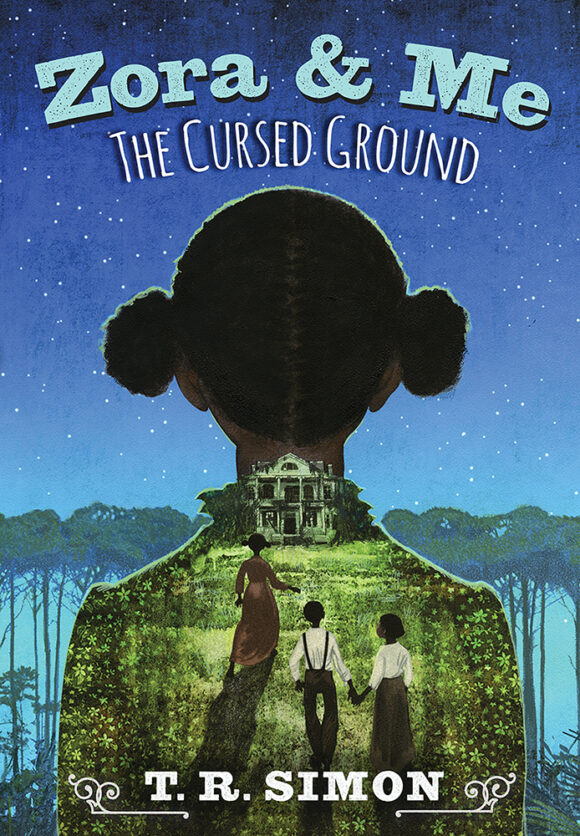

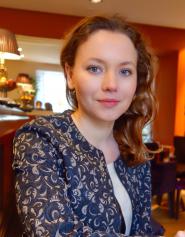 Dr. Yuliya Zabyelina
Dr. Yuliya Zabyelina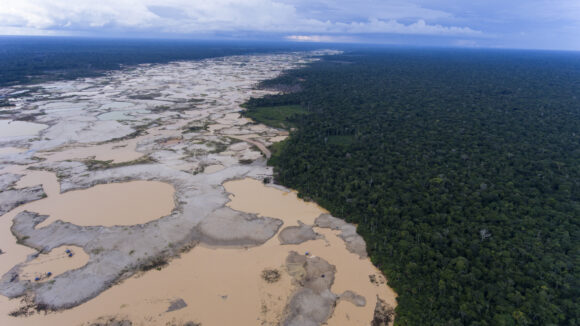
 If you’re speaking about climate change, organized crime is there as well. It’s a global issue, and it’s not a standalone topic—it needs to be looked at together with other problems, from the point of view of different disciplines, so we can cross-fertilize solutions. Everything is connected with everything.
If you’re speaking about climate change, organized crime is there as well. It’s a global issue, and it’s not a standalone topic—it needs to be looked at together with other problems, from the point of view of different disciplines, so we can cross-fertilize solutions. Everything is connected with everything.


Recent Comments